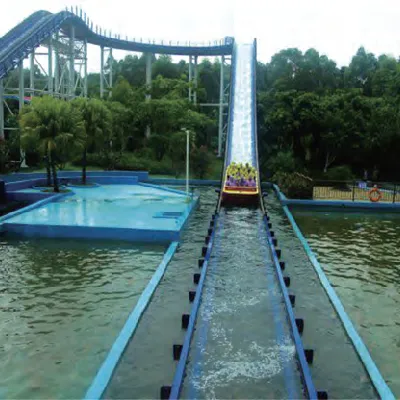- Albanian
- Arabic
- Belarusian
- Bengali
- Czech
- English
- French
- German
- Hebrew
- Hungarian
- Indonesian
- irish
- Italian
- Japanese
- kazakh
- Persian
- Russian
- Thai
- Uzbek
- Vietnamese
amusement park equipment prices
The Price of Fun A Comprehensive Look at Amusement Park Equipment Costs
Amusement parks are synonymous with fun, excitement, and thrill. From roller coasters that defy gravity to whimsical merry-go-rounds, these parks offer a vast array of rides and attractions designed to create unforgettable experiences. However, behind the joyous screams and laughter lies a complex world of economics, particularly when it comes to the costs associated with amusement park equipment. This article explores the various factors that contribute to the prices of amusement park equipment, giving insight into the financial considerations of creating a magical place for families and friends to enjoy.
1. Types of Amusement Park Equipment
Amusement parks feature a diverse range of equipment, each with its own pricing structure. Broadly, we can categorize the equipment into four main types thrill rides, family rides, children's rides, and water attractions.
- Thrill Rides These are the heart of any amusement park, designed for adrenaline junkies. Prices for thrill rides can range anywhere from $1 million to $20 million or more, depending on the complexity and size of the ride. Iconic rides such as roller coasters often require extensive engineering, sophisticated safety mechanisms, and durable materials, significantly driving up their costs.
- Family Rides Aimed at a broader audience, family rides are designed to be enjoyed by guests of all ages. Examples include Ferris wheels and bumper cars, with costs typically ranging from $250,000 to $5 million. These rides are essential for creating a welcoming environment for families, making them a staple in many parks.
- Children's Rides These attractions are specifically tailored for younger guests, characterized by gentle motions and bright colors. Prices for children's rides can be considerably lower, ranging from $50,000 to $500,000. These rides are often less intricate but require careful attention to safety standards.
- Water Attractions As temperatures rise, water attractions gain popularity. Options such as water slides and lazy rivers can cost between $500,000 and upwards of $10 million. The construction of water attractions involves unique considerations regarding water filtration systems, safety features, and maintenance, all of which contribute to the overall expense.
2. Factors Influencing Equipment Prices
Several factors influence the pricing of amusement park equipment, all of which reflect the demand and complexities of the industry.
amusement park equipment prices

- Design and Engineering The design phase involves collaboration with engineers and safety experts to create a ride that is both exciting and safe. This phase can be costly, as it requires simulations, blueprints, and sometimes, years of research and development.
- Materials and Construction The quality of materials used—such as steel for roller coasters or fiberglass for water slides—greatly affects the cost. Higher quality materials can withstand the test of time and extensive use, thereby ensuring guest safety and lower long-term maintenance costs.
- Safety Regulations Strict safety regulations imposed by governmental bodies necessitate comprehensive tests and certifications for rides, contributing to the overall price. Compliance with these regulations is non-negotiable and adds to the investment cost.
- Operational Costs Beyond the initial purchase, ongoing operational expenses must be considered, including maintenance, staffing, insurance, and utilities. Some rides may require specialized personnel for operation, adding layers of expense.
3. The Impact of Market Trends
The amusement park industry is subject to changing consumer preferences and market trends, which also influence equipment prices. For instance, the recent trend towards sustainable practices has led to innovations in equipment design and construction. Parks are investing in eco-friendly technologies, which can have higher upfront costs but lead to savings in energy consumption and maintenance over time.
Additionally, with the increasing competition among parks to attract visitors, many are opting for unique or themed rides that can substantially increase ticket sales but come at a higher price point. The emphasis on immersive experiences—like virtual reality integrations or elaborate theming—also increases construction costs.
Conclusion
In conclusion, the costs associated with amusement park equipment are shaped by a multitude of factors, from the type of ride to its design, construction, materials, and regulatory compliance. While building a successful amusement park is a significant financial investment, the long-term returns in terms of customer satisfaction and repeat visits can justify these expenses. Understanding these cost components can provide valuable insights to park operators and investors looking to create spaces filled with joy and excitement for generations to come.
-
Flume Ride-Hebei Zhipao Amusement Equipment Manufacturing Co., Ltd.|Thrilling Water Attraction&Customizable DesignJul.30,2025
-
Flume Ride - Hebei Zhipao Amusement Equipment | Water Coaster, Thrilling DescentJul.30,2025
-
Flume Ride - Hebei Zhipao | Thrilling Water AttractionJul.30,2025
-
Flume Ride: Thrilling Water Attraction by Hebei Zhipao|Log Flume Manufacturers&Flume Ride DesignJul.30,2025
-
Flume Ride-Hebei Zhipao Amusement Equipment Manufacturing Co., Ltd.|Thrilling Water Coaster, Safe DesignJul.30,2025
-
Flume Ride-Hebei Zhipao Amusement Equipment Manufacturing Co., Ltd.|Thrilling Water Attraction, Safe DesignJul.30,2025
